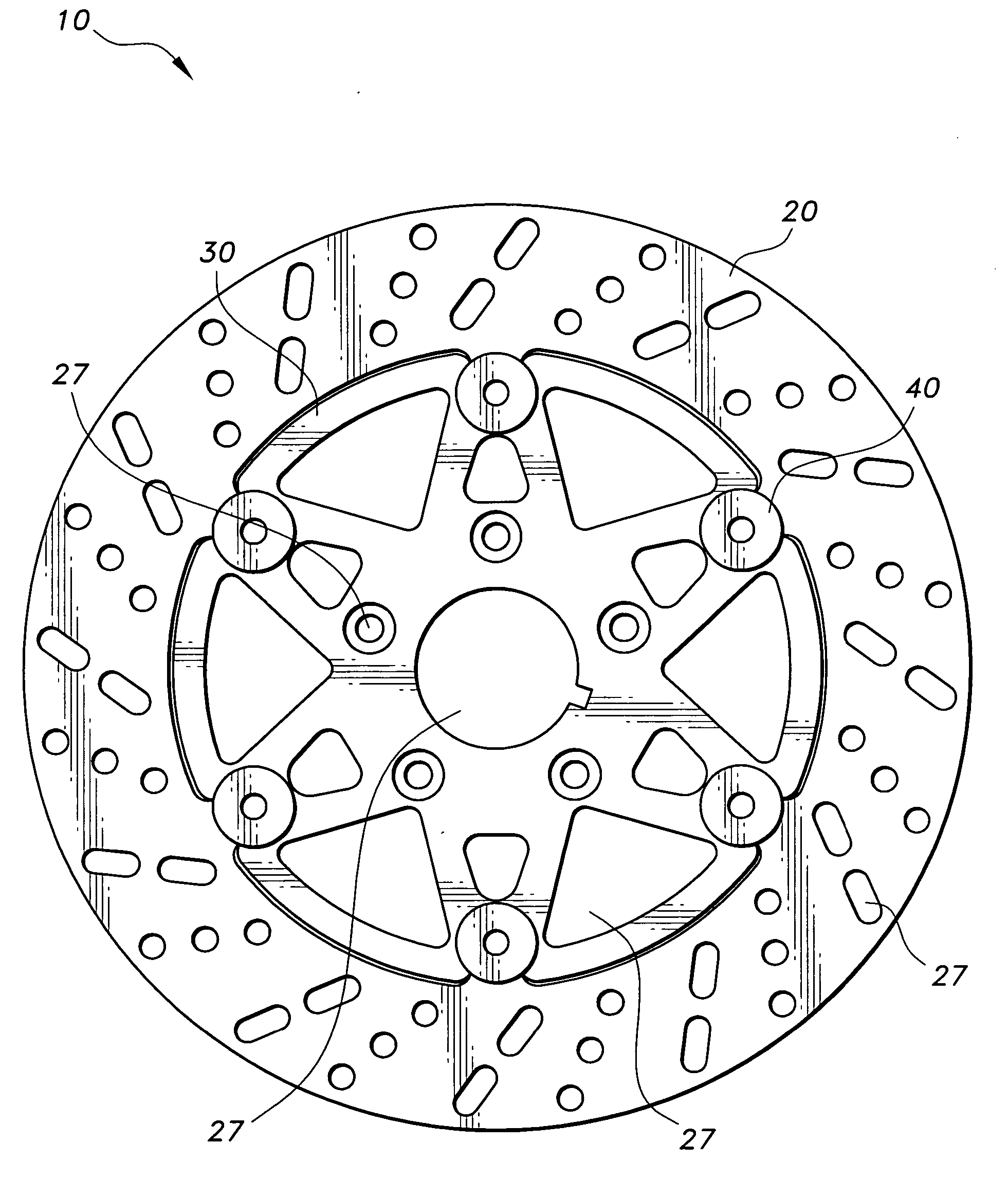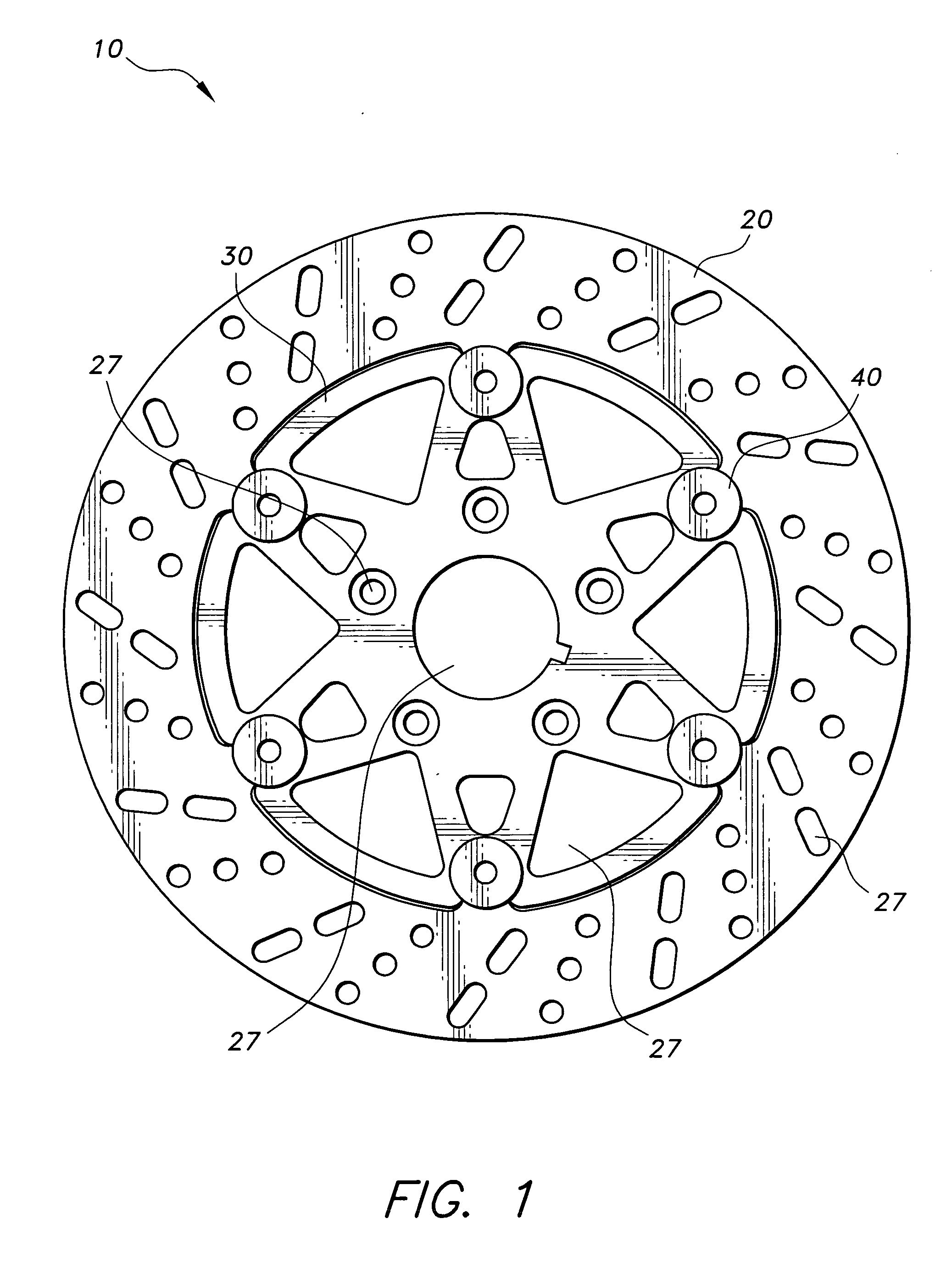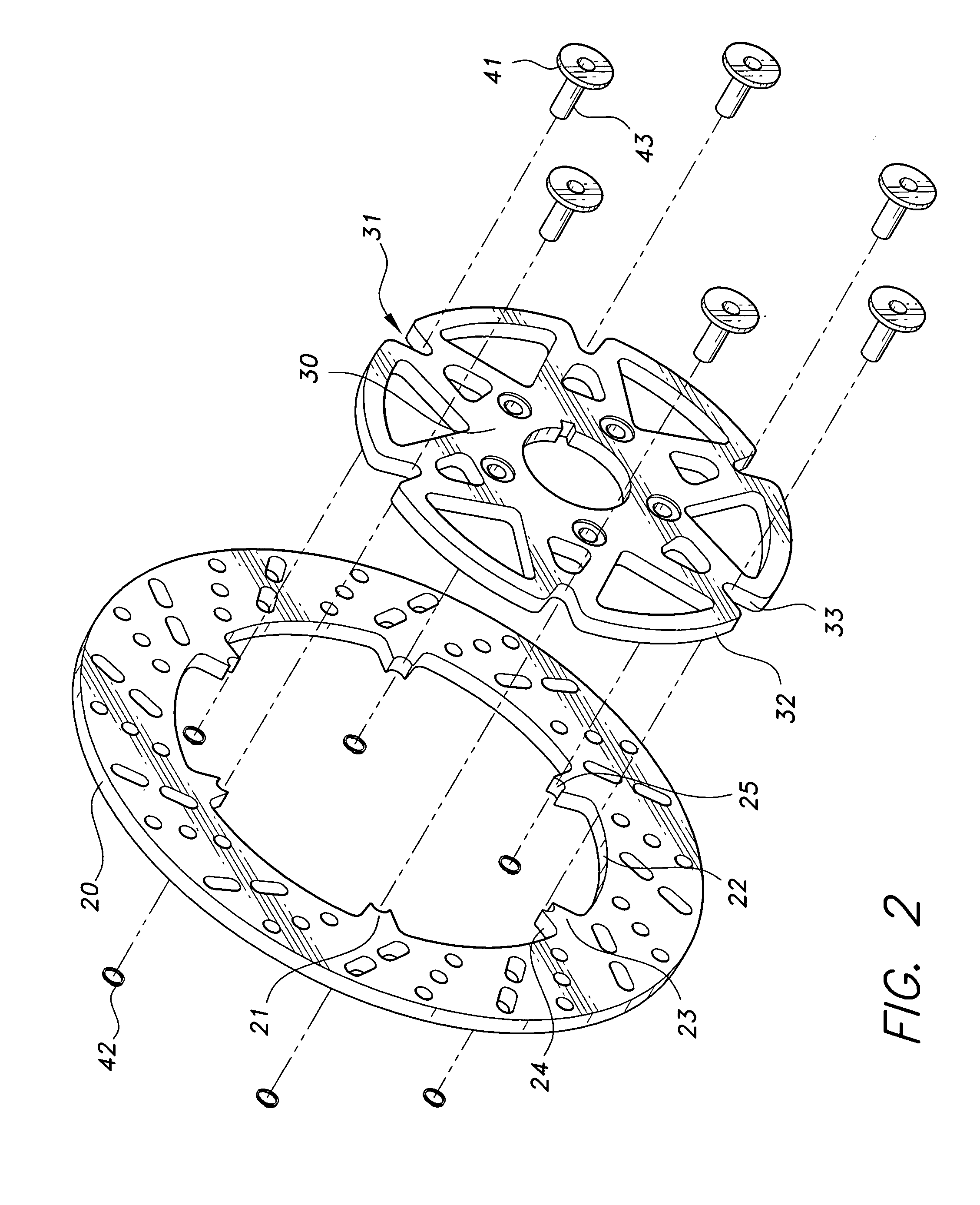Floating brake rotor assembly with non-load bearing pins
a floating, brake rotor technology, applied in the direction of brake discs, braking systems, friction linings, etc., can solve the problems of increasing the likelihood of thermal induced distortion hub and pin deformation, and localized wear and deformation of the brake rotor, so as to facilitate assembly and replacement of the components
- Summary
- Abstract
- Description
- Claims
- Application Information
AI Technical Summary
Benefits of technology
Problems solved by technology
Method used
Image
Examples
Embodiment Construction
[0030] The present invention is a floating brake rotor assembly with non-load bearing pins designated generally as 10 in the drawings. As shown in FIGS. 1 and 2, the invention includes a brake rotor 20 that is secured to a hub 30 by six pin and spring assemblies 40.
[0031] The brake rotor 20 is an annular disk with two opposing flat sides or faces, and six protruding members 21 or teeth extending from its 20 inner circumferential edge 22. Each protruding member 21 has two lateral faces 23 and two radially extending bearing faces 24. Each lateral face 23 is flush with the lateral faces of the brake rotor 20 and each radially extending bearing face 24 is perpendicular to the lateral faces of the brake rotor 20. The two radially extending bearing faces 24 taper toward each other from the proximal end to the distal end 25 of each protruding member 21, i.e., from the rim towards the center of the rotor 20. From a lateral perspective, the distal end 25 of each protruding member 21 is conc...
PUM
 Login to View More
Login to View More Abstract
Description
Claims
Application Information
 Login to View More
Login to View More - R&D
- Intellectual Property
- Life Sciences
- Materials
- Tech Scout
- Unparalleled Data Quality
- Higher Quality Content
- 60% Fewer Hallucinations
Browse by: Latest US Patents, China's latest patents, Technical Efficacy Thesaurus, Application Domain, Technology Topic, Popular Technical Reports.
© 2025 PatSnap. All rights reserved.Legal|Privacy policy|Modern Slavery Act Transparency Statement|Sitemap|About US| Contact US: help@patsnap.com



